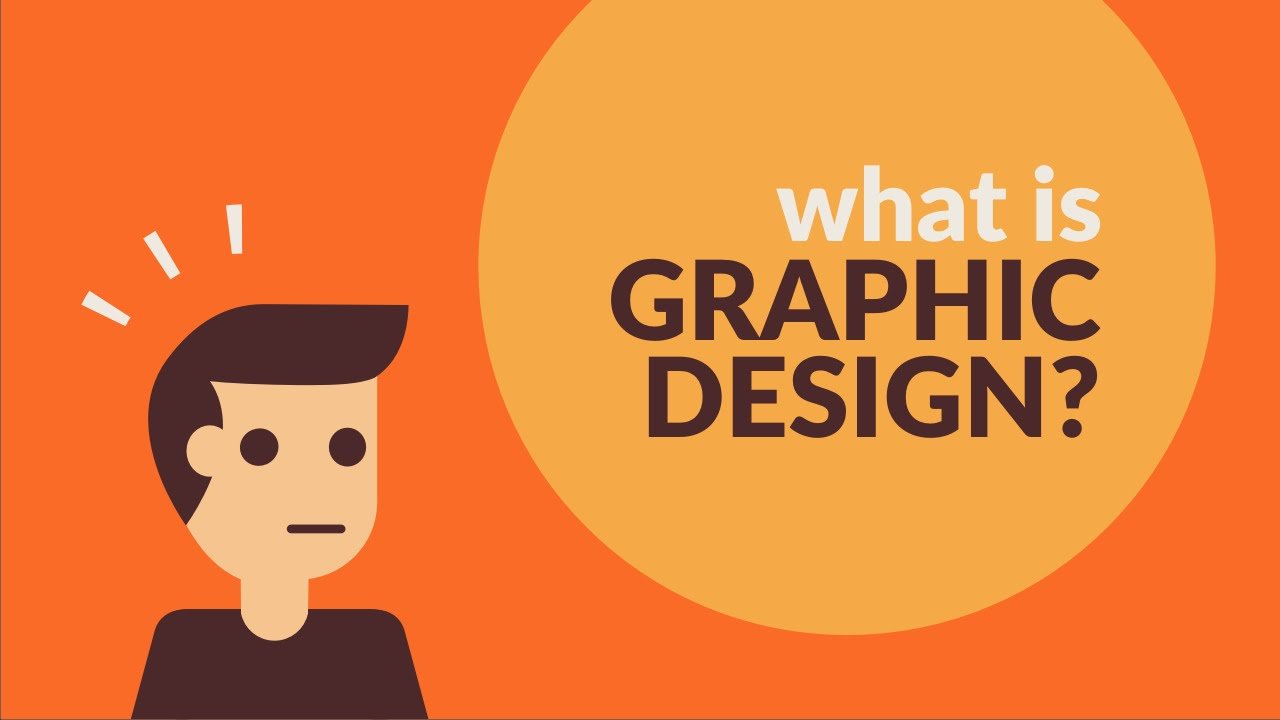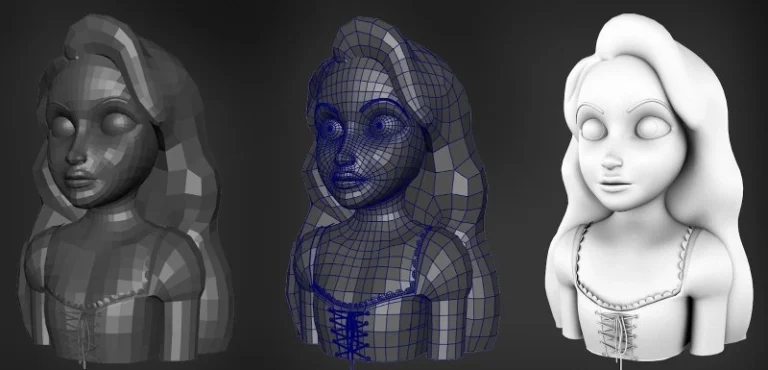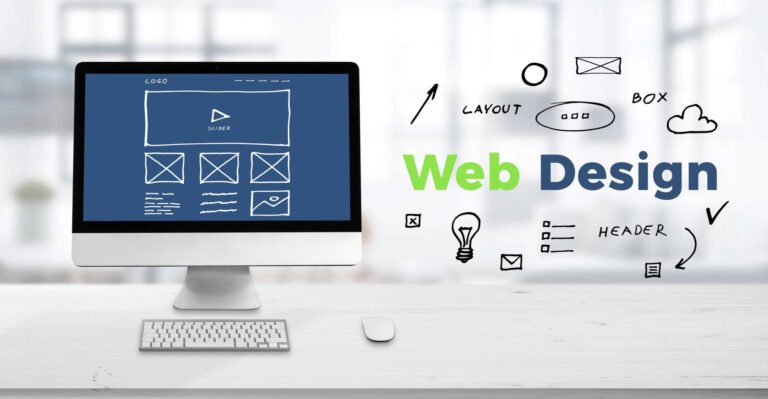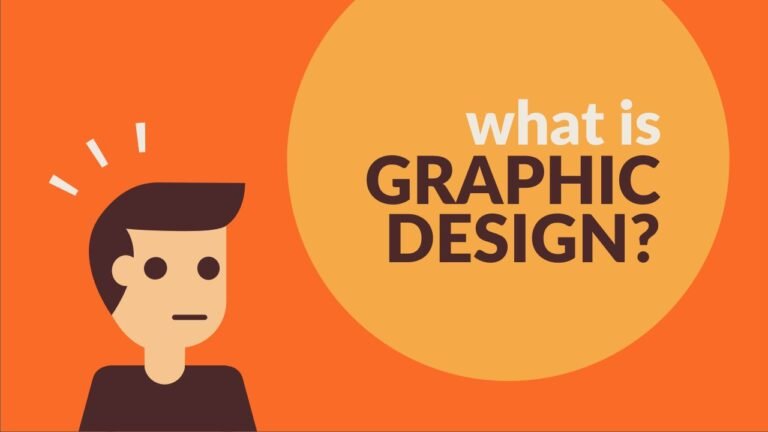In the craft of graphic design, experts produce visual information with the intention of conveying ideas. Designers employ visual hierarchy and page layout strategies to tailor text and imagery to the individual demands of users, with a particular emphasis on the logical arrangement of elements in interactive designs to maximize user experience.
Goal of graphic design is to visually shape the user experience
The history of graphic design extends beyond Egyptian hieroglyphs to at least 17,000-year-old cave drawings. The print business of the 1920s is where the phrase first appeared. It still covers a variety of tasks, such as designing logos. In this context, graphic design refers to both marketing and visual appeal. Graphic designers use text, colour, and imagery to draw in viewers. However, user experience (UX) designers who work alongside visual designers must utilise a human-centered approach to support stylistic decisions about things like font and image placement.
This means that in order to produce visually appealing designs that maximise usefulness, you must first concentrate on—and try to empathise the most with—your target consumers. In UX design, aesthetics must have a function; art is not made for the sake of art. Thus, visual designers need to become graphic designers as well.
- To guarantee user accessibility, take into account the information architecture of your interactive designs.
- Use your graphic design expertise to produce work that takes into account the user’s visual processing capacity as well as the complete user experience.
In today’s visually-driven world, graphic design plays a prominent role in capturing attention and conveying messages effectively. But what exactly is graphic design? It is an art form and a strategic process that combines creativity, technology, and communication to create visually appealing designs that solve problems and evoke emotions. From logos and websites to packaging and advertisements, graphic design is all around us, influencing our perceptions and shaping our experiences.
Table of Contents
Importance of Graphic Design
Graphic design is not just about creating beautiful visuals; it is a crucial element in establishing a strong brand identity and attracting customers. In the highly competitive business landscape, standing out from the crowd is essential, and graphic design helps businesses achieve that. A well-designed logo, for example, can instantly communicate a company’s values and personality, making it memorable and recognizable.
Furthermore, graphic design is instrumental in conveying key messages and enhancing the overall user experience. Whether it’s through website design, product packaging, or marketing materials, visually appealing graphics can captivate the audience and make a lasting impression. In a world where attention spans are shrinking, effective graphic design can grab attention and keep customers engaged. Finally, graphic design can also convey professionalism and credibility. A poorly designed website or marketing collateral can give the impression of a lack of attention to detail or unprofessionalism, potentially driving potential customers away. On the other hand, a well-designed and cohesive brand identity can inspire trust and confidence, encouraging customers to choose one business over another.
Different Types of Graphic Design
Graphic design encompasses a wide range of disciplines, each serving a specific purpose and requiring a unique set of skills. Here are some of the most common types of graphic design:
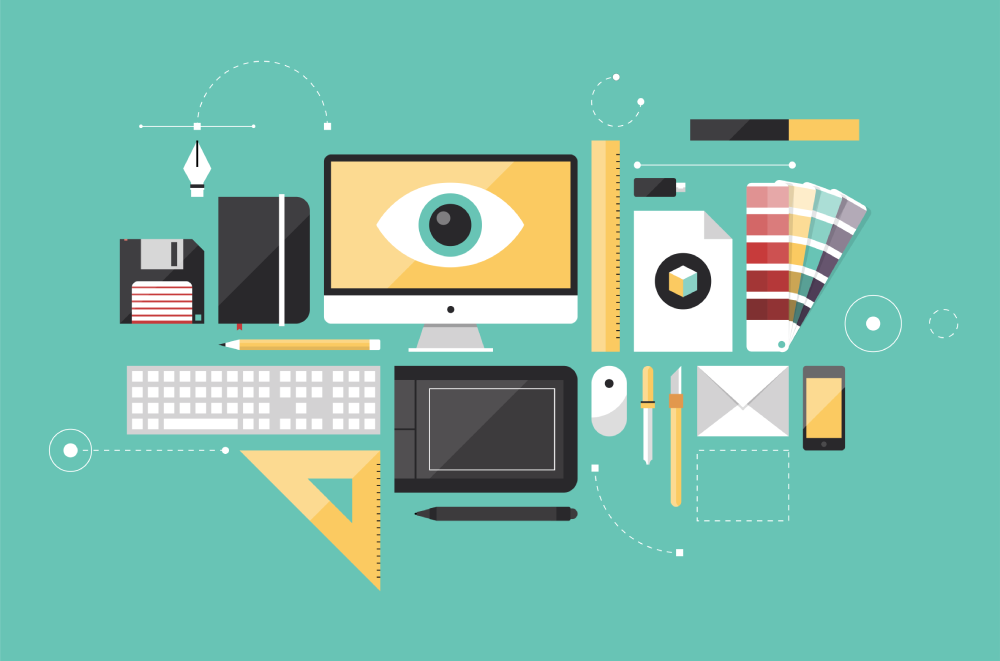
1. Visual Identity Design
This type of design focuses on creating a cohesive and recognizable brand identity, including logos, typography, color palettes, and brand guidelines. It sets the tone for all other design elements and ensures consistency across various channels.
2. Print Design
Print design involves creating graphics for physical materials such as brochures, flyers, business cards, and posters. It requires an understanding of layout, typography, and print production processes to create visually appealing and print-ready designs.
3. Web Design
Web design combines graphic design with user experience (UX) and user interface (UI) design to create visually appealing and functional websites. It involves creating layouts, selecting fonts and colors, and optimizing the user journey for an enjoyable browsing experience.
4. Packaging Design
Packaging design is critical for product branding and marketing. It involves creating visually appealing and functional packaging that not only protects the product but also communicates its value and differentiates it from competitors.
5. Motion Graphics
Motion graphics combine animation and graphic design to create visually dynamic and engaging content that can be used in videos, presentations, and digital advertisements. It adds an extra layer of storytelling to static designs, capturing attention and conveying information effectively.
6. UX/UI Design
User experience (UX) and user interface (UI) design focus on creating intuitive and user-friendly interfaces for websites, mobile apps, and other digital platforms. It involves understanding user behavior, conducting user research, and designing interfaces that are visually appealing and easy to navigate.
Role of Graphic Design in Marketing and Advertising
In the ever-evolving landscape of marketing and advertising, graphic design plays a pivotal role in capturing attention, conveying messages, and driving conversions. Here’s how graphic design contributes to successful marketing and advertising campaigns:
1. Branding: Graphic design is the cornerstone of branding. It helps businesses establish a visual identity that resonates with their target audience, communicates their values, and sets them apart from competitors. From logos to color schemes, fonts to imagery, graphic design elements are used consistently across all marketing channels to reinforce brand recognition and build trust.
2. Visual Communication: In a world saturated with information, visual content is king. Graphic design enables marketers to communicate complex messages in a visually appealing and easily digestible format. Infographics, for example, combine text and visuals to convey data and statistics in a way that is engaging and memorable. Similarly, well-designed social media graphics can capture attention and drive engagement.
3. Advertising Campaigns: From print ads to digital banners, graphic design is critical in creating eye-catching and persuasive advertisements. Effective advertising design considers the target audience, the desired outcome, and the medium in which the ad will be displayed. It utilizes compelling visuals, persuasive copy, and strategic placement to grab attention and generate interest in the product or service being promoted.
4. Web Design and User Experience: A well-designed website is essential for any business looking to establish an online presence. Graphic design plays a key role in creating visually appealing layouts, intuitive navigation, and engaging user experiences. By designing websites that are visually appealing, easy to navigate, and optimized for mobile devices, businesses can enhance brand perception and drive conversions.
5. Packaging and Product Design: Packaging design is not just about protecting the product; it is an opportunity to create a memorable brand experience. Graphic design elements such as color, typography, and imagery are used to communicate the product’s value, evoke emotions, and differentiate it from competitors. Well-designed packaging can entice customers to make a purchase and create a lasting impression.
Key Principles of Graphic Design
To create visually appealing and effective designs, graphic designers follow certain principles that guide their creative process. Here are some key principles of graphic design:
1. Balance: Balance refers to the distribution of visual elements in a design. It can be symmetrical, where elements are mirrored on either side of a central axis, or asymmetrical, where elements of differing size or visual weight are balanced through careful placement. Balance creates a sense of stability and harmony in a design.
2. Contrast: Contrast involves using elements that are different from each other to create visual interest and draw attention. This can be achieved through the use of contrasting colors, sizes, shapes, or textures. Contrast adds depth and helps guide the viewer’s eye to key elements in a design.
3. Hierarchy: Hierarchy refers to the arrangement of elements in a design to establish a visual order of importance. It helps guide the viewer’s eye and ensures that the most important information stands out. Hierarchy can be achieved through the use of color, size, typography, and placement.
4. Alignment: Alignment involves positioning elements in a design in a way that creates a sense of order and unity. It helps establish a visual connection between different elements and creates a cohesive and organized design. Alignment can be achieved through the use of grids, guides, and the careful placement of elements.
5. Repetition: Repetition involves using consistent elements throughout a design to create visual unity and reinforce brand identity. It can be achieved through the use of consistent colors, fonts, shapes, or patterns. Repetition creates a sense of familiarity and helps establish visual consistency across different marketing materials.
6. White Space: Also known as negative space, white space refers to the empty spaces between elements in a design. It helps create visual breathing room, improves readability, and enhances the overall visual impact of a design. White space can be just as important as the elements themselves, allowing them to stand out and grab attention.
Common Software and Tools Used in Graphic Design
Graphic designers rely on various software and tools to bring their creative visions to life. Here are some of the most commonly used software and tools in graphic design:
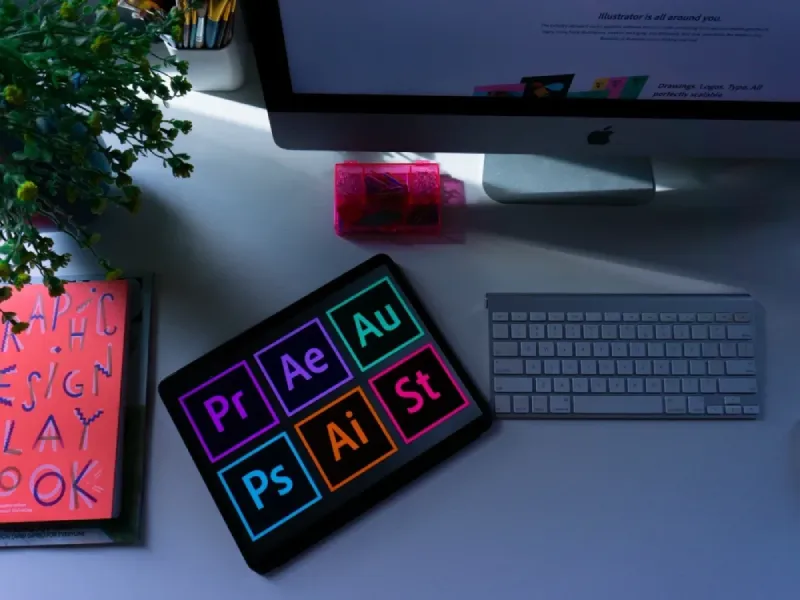
1. Adobe Creative Cloud: Adobe Creative Cloud is a collection of industry-standard software for graphic design, including Photoshop, Illustrator, InDesign, and more. These tools allow designers to create and edit images, design vector graphics, and create layouts for print and digital media.
2. Canva: Canva is a popular online graphic design platform that offers a range of easy-to-use tools and templates for creating social media graphics, presentations, posters, and more. It is a great option for beginners or those without access to professional design software.
3. Sketch: Sketch is a vector-based design tool specifically designed for creating user interfaces and web designs. It offers a streamlined and intuitive interface, powerful vector editing tools, and collaboration features for designing responsive and user-friendly interfaces.
4. Procreate: Procreate is a digital drawing and painting app for iPad that is favored by many illustrators and digital artists. It offers a wide range of brushes, layers, and effects, allowing artists to create detailed and expressive digital artwork.
5. Figma: Figma is a cloud-based design and prototyping tool that enables collaborative design and seamless handoff between designers and developers. It allows teams to work together in real-time, create interactive prototypes, and ensure design consistency across different devices.
Process of Creating a Graphic Design Project
Behind every visually stunning design is a well-defined process that graphic designers follow. While the exact process may vary depending on the project and the designer’s preferences, here is a general overview of the graphic design process:
1. Brief and Research: The first step in any design project is understanding the client’s requirements and conducting thorough research. Designers gather information about the target audience, competitors, and project goals to inform their design decisions.
2. Concept Development: Based on the research, designers brainstorm ideas and develop initial design concepts. This involves sketching, experimenting with different layouts, and exploring various visual styles. The goal is to generate a range of options to present to the client.
3. Design Execution: Once a concept is selected, designers move to the execution phase. They use design software and tools to create the final design, paying attention to details such as typography, color, and composition. This stage often involves multiple iterations and feedback from the client.
4. Client Feedback and Revisions: After presenting the initial design, designers gather feedback from the client and make revisions based on the feedback. This iterative process ensures that the final design meets the client’s expectations and objectives.
5. Finalization and Delivery: Once the design is approved, designers prepare the final files for delivery. This may involve optimizing the design for different formats and platforms, creating print-ready files, or exporting assets for web and digital use. Attention to detail is crucial to ensure the design is ready for production.
Examples of Successful Graphic Design Campaigns
The power of graphic design can be seen in numerous successful campaigns that have left a lasting impact on audiences. Here are a few examples of graphic design campaigns that have achieved remarkable results:
1. Nike’s “Just Do It” Campaign: Nike’s iconic “Just Do It” campaign, launched in 1988, is a prime example of the power of a simple yet memorable design and message. The campaign featured bold typography and powerful imagery that resonated with athletes and inspired a generation.
2. Coca-Cola’s “Share a Coke” Campaign: Coca-Cola’s “Share a Coke” campaign, launched in 2011, personalized Coke bottles with popular names and phrases. The design featured the classic Coca-Cola logo alongside the personalized names, creating a sense of personal connection and encouraging consumers to share their Coke experience on social media.
3. Apple’s Minimalist Product Packaging: Apple is known for its minimalist and elegant product packaging design. The clean and simple design, with a focus on the product itself, communicates the brand’s commitment to quality and attention to detail. Apple’s packaging design has become iconic and instantly recognizable.
4. Airbnb’s Rebranding: In 2014, Airbnb underwent a rebranding that included a new logo and visual identity. The new logo, known as the “Bélo,” is a simple and versatile design that represents the idea of belonging and community. The rebranding helped Airbnb establish itself as a global hospitality brand.
These examples demonstrate the power of graphic design in creating memorable and impactful campaigns that resonate with audiences, drive brand recognition, and ultimately, contribute to business success.
Graphic Design Trends to Watch Out For
As with any creative field, graphic design is constantly evolving, influenced by technology, cultural shifts, and changing consumer preferences. Here are some graphic design trends to watch out for in the coming years:
1. Minimalism: Minimalism has been a dominant trend in graphic design for several years and shows no signs of slowing down. Clean and simple designs with ample white space, bold typography, and limited color palettes continue to be popular, conveying a sense of sophistication and elegance.
2. Bold and Vibrant Colors: Vibrant and bold color schemes are making a comeback, adding energy and personality to designs. Brands are using bold and unexpected color combinations to stand out and evoke emotions in their audience.
3. Typography as a Design Element: Typography is taking center stage as a design element itself, with designers using custom fonts, creative layouts, and typography animations to create visually striking and expressive designs.
4. 3D and Immersive Design: Advancements in technology have made 3D design more accessible, allowing designers to create immersive and interactive experiences. 3D elements, animations, and virtual reality are being used to create engaging and memorable designs.
5. Sustainability and Eco-friendly Design: With the growing emphasis on sustainability and environmental consciousness, eco-friendly design is becoming more prevalent. Designers are using recycled materials, sustainable printing techniques, and earthy color palettes to communicate a commitment to the environment.
Conclusion
As technology continues to advance and consumer expectations evolve, the future of graphic design holds immense potential. With the rise of virtual reality, augmented reality, and artificial intelligence, designers are exploring new ways to create immersive and personalized experiences. The integration of design and technology will blur the lines between physical and digital, creating exciting opportunities for innovation and creativity.
However, amidst all the technological advancements, the core principles of graphic design will remain essential

